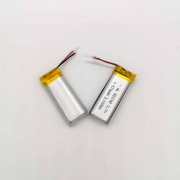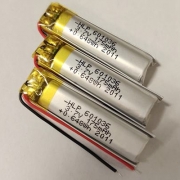Four Key Properties of Rechargeable Lithium Polymer Batteries
1. Charge retention capability.
The charge retention capability is usually referred to as self-discharge, which usually refers to the retention capability of the battery stored in the corresponding environmental conditions in the open circuit state. Self-discharge is mainly determined by various factors such as lithium battery materials, manufacturing processes, and storage conditions. Generally, the higher the temperature, the greater the self-discharge rate. The corresponding degree of self-discharge of the rechargeable battery is a normal phenomenon
2. Internal resistance.
The internal resistance of a battery usually refers to the resistance to current flowing through the interior of the battery. The internal resistance of the rechargeable battery is very small, and it is necessary to use a special instrument to accurately measure the more accurate conclusion. Under normal circumstances, the internal resistance of the battery is the internal resistance in the charging state, even if the internal resistance of the battery is fully charged (corresponding to the internal resistance in the discharging state, which refers to the internal resistance after the battery is fully discharged. Generally speaking, the internal resistance in the discharging state The resistance is larger than the internal resistance in the charging state, and at the same time, it is not stable). The greater the internal resistance of the battery, the more energy the battery itself consumes, and the lower the battery’s use efficiency.
4. Capacity.
Refers to the total power that the battery can release under the corresponding discharge conditions.
5. Safety performance.
It is impossible to accept batteries with poor safety and reliability performance indicators. The most influential among them are explosions and leaks. The occurrence of explosion and liquid leakage is mainly related to the internal pressure, structure and process design of the battery, as well as incorrect operation.







